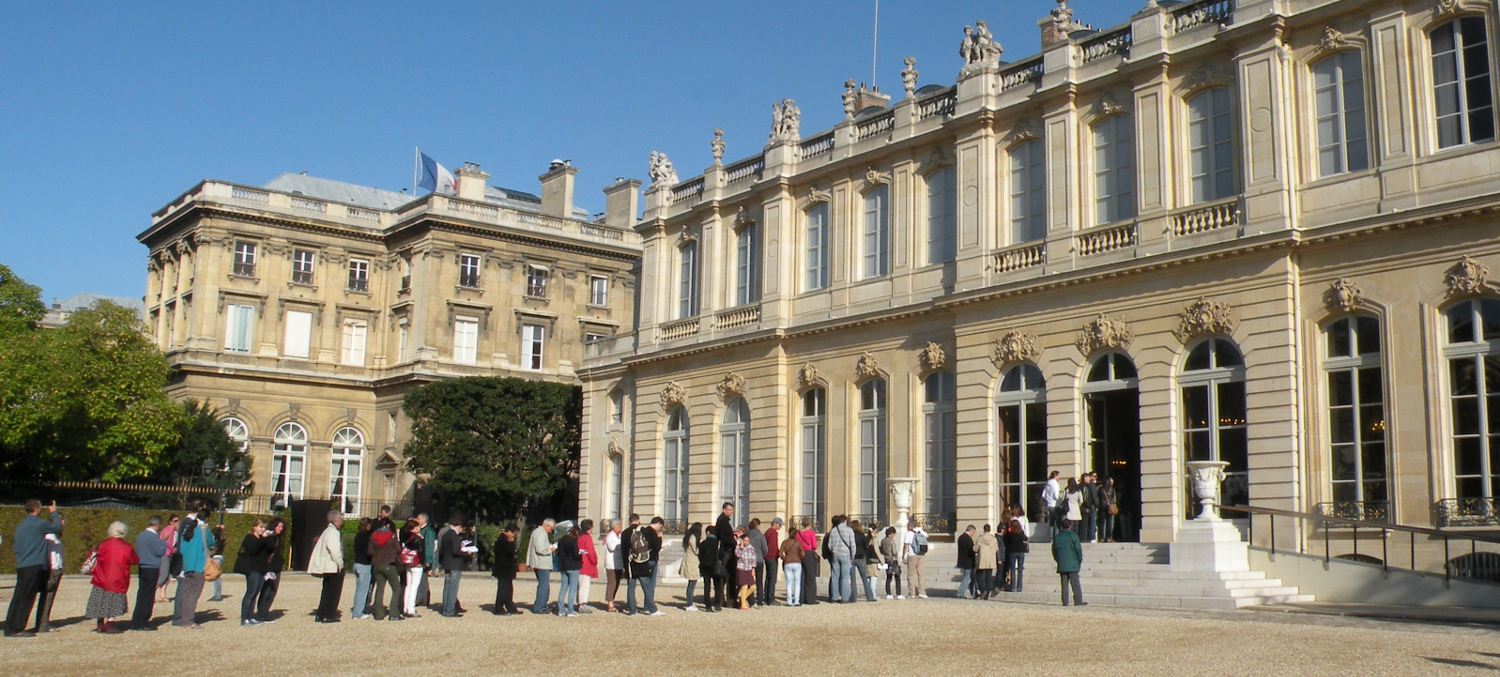

Jonathan Chibois
Post-doctoral Researcher
Institut interdisciplinaire d’anthropologie du contemporain (IIAC)
This contribution focuses on the way in which the French National Assembly takes advantage of the buildings in which it sits −the Palais Bourbon− to give material existence to the ideal of popular sovereignty. My objective is to show how (according to what logic, what purpose and with what means) the parliamentary institution dynamically distributes the occupation of this place among its various users and regulates its uses. In this perspective, I am not only interested in the hemicycle and the historic heart of the Palais Bourbon, i.e. its most visible and symbolic heritage. On the contrary, my aim is to look at the overall way in which the institution inhabits this place, giving an important place to the analysis of its periphery, its margins and its backstage areas.
My analysis is based on a long-term ethnographic survey conducted between 2007 and 2017 as part of a doctoral thesis in anthropology on parliamentary infrastructure. This work led to the close observation of two phenomena. The first concerns the evolution of the movement of people policy in the Palais Bourbon with the gradual development of digital access control technologies. The second concerns the concomitant implementation of a cultural policy of guided tours based on the discovery of the Palais Bourbon’s real estate heritage, aimed exclusively at French citizens. My contribution is a synthesis of these two case studies.
My contribution will be organized in three parts. My starting point is the great reversal, at the end of the 1990s, of the policy of welcoming the public within the territory of the National Assembly. Since the French Revolution, in fact, citizens’ access to the Palais Bourbon has been constantly restricted both to protect the members of the Assembly and in the name of the privilege of the election. Twenty-five years ago, the rise in anti-parliamentary rhetoric forced the institution to review its position and to consider an extended welcoming policy, in order to show openness and give French citizens a full place in this symbolic place. Whereas the Palais Bourbon was a space reserved for MPs, it then became the “House of the citizens”.
First, I will explain what an important challenge this greater openness to the public has posed to the Assembly. There was no question of abandoning the protection of Members’ working conditions and privileges. The administration of the institution was therefore faced with two contradictory demands: on the one hand, the demand that Members should be at home in the Palais Bourbon, that is to say, away from the solicitations and protests of the citizens; and on the other hand, the demand of the Presidency of the Assembly to welcome the citizens to the Palais as widely as possible.
Secondly, I will present how the Assembly has resolved this challenge. In order to do so, it has made extensive use of the possibilities offered by digital access control technologies, and in particular by the widespread introduction of the principle of access badges. This has made it possible to develop a strategy of “flow separation”, which consists in making certain areas of the Palais accessible to certain types of badges only. Moreover, this strategy has made it possible to differentiate the use of the interior space of the Palais in terms of time, depending on specific moments of the day, week or year.
Thirdly, I will highlight the implications of this new welcoming policy of the public and its concrete implementation. In order to resolve the contradictory injunction presented above, the Assembly had indeed to strictly define the perimeter of each category of users of the Palais Bourbon (MPs, journalists, citizens, etc.), their rights of access to the different places and their conditions of mutual interaction. This gave rise to a hierarchy of statuses, made explicit by the badges, at the top of which are the deputies and at the bottom of which are the citizens.
In the end, I will show that the Assembly today inhabits the Palais Bourbon in a way that affirms and promotes a particular vision of national representation, with distant historical roots. This new policy of welcoming the public reinforces the public’s position as spectators of parliamentary work and that of the members of parliament as the only legitimate actors in the debates. In the Assembly, this is the first result of my doctoral thesis, change is incessant but paradoxically it is always put at the service of the continuity of the established order.